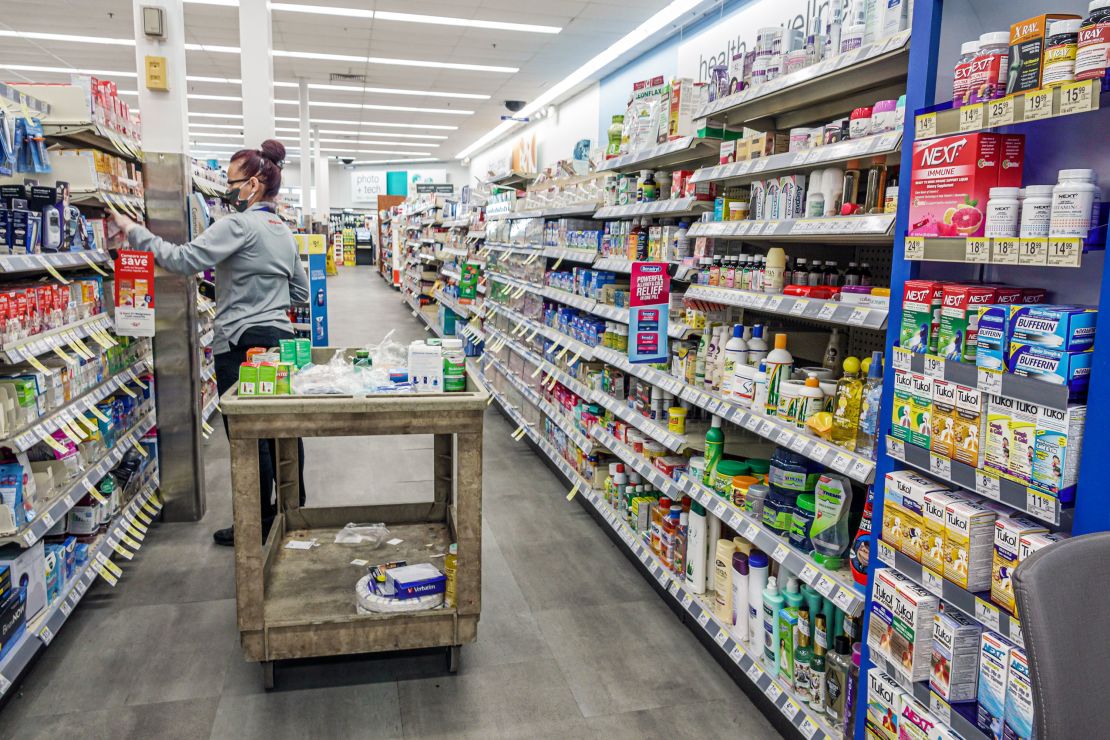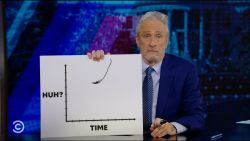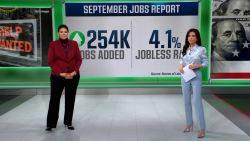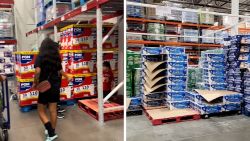Throughout the pandemic, major retailers have warned about surging theft and a rise in brazen shoplifting attempts. But a top Walgreens executive now says the freakout may have been overblown.
“Maybe we cried too much last year” about merchandise losses, Walgreens finance chief James Kehoe acknowledged Thursday on an earnings call. The company’s rate of shrink — merchandise losses due to theft, fraud, damages, mis-scanned items and other errors — fell from 3.5% of total sales last year to around 2.5% during its latest quarter.
Kehoe’s message is a notable shift from comments about theft from Walgreens and other retailers like Walmart and Target over the last nearly three years.
Companies and retail industry groups have tried to draw attention to shoplifting and “organized retail crime” rings smashing windows and grabbing aisles full of merchandise off shelves, urging lawmakers to crack down. Incidents have certainly happened: Many political leaders and local and national news outlets, including CNN, have picked up on viral incidents of smash-and-grab robberies.

So retailers took action. Some began locking up more products like deodorant and toothpaste, adding extra security guards and even shuttering stores.
Last January, Walgreens (WBA) said its shrink was up by more 50% from the year prior. The company blamed part of that spike on organized retail crime and closed five locations in the San Francisco area in 2021, claiming theft as the reason for their closure.
“This is not petty theft,” Kehoe said last January. “These are gangs that actually go in and empty our stores of beauty products. And it’s a real issue.”
But a year later, Kehoe said Thursday that the company added too much extra security in stores.
“Probably we put in too much, and we might step back a little bit from that,” he said of security staffing. The company has found private security guards to be “largely ineffective” in deterring theft, so instead it’s putting in more police and law enforcement officers.
The numbers used didn’t add up
Though Walgreens may have overblown the shoplifting threat over the last few years, it’s true that theft has always been a problem for retailers — and that it often spikes during recessions and other periods of economic hardship, when people are desperate and may feel the need to turn to petty crime to sustain themselves. What’s more, recent factors like shortstaffed stores and self-checkout can make it easier for thieves to steal.
The National Retail Federation estimated that shrink cost retailers $94.5 billion in 2021, up from $61.7 billion in 2019 before the pandemic. Shoplifting often does not go reported to the police, but companies have said theft has worsened during the Covid crisis.
“Along with other retailers, we’ve seen a significant increase in theft and organized retail crime across our business,” Target (TGT) CEO Brian Cornell said in November.
Walmart (WMT) CEO Doug McMillon said last month on CNBC that “theft is an issue” and “higher than what it has historically been.” He warned stores could close if it continued.
However, it’s not clear the numbers add up.
For example, data released by the San Francisco Police Department does not support the explanation Walgreens gave that it was closing five stores because of organized retail theft, the San Francisco Chronicle reported in 2021.
One of the shuttered stores that closed had only seven reported shoplifting incidents in 2021 and a total of 23 since 2018, according to the newspaper. Overall, the five stores that closed had fewer than two recorded shoplifting incidents a month on average since 2018.
Similarly, a 2021 Los Angeles Times analysis of figures released by industry groups on losses due to organized retail crime found “there is reason to doubt the problem is anywhere near as large or widespread as they say.”




























